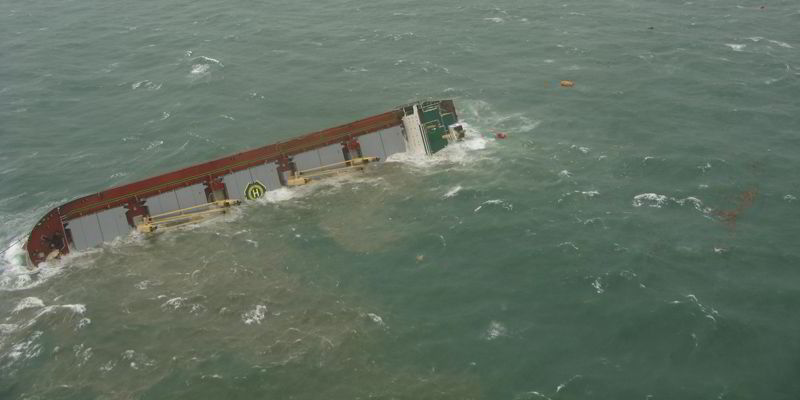Industry associations and insurers are keeping a close eye on the decision to lift a ban on nickel ore exports from Indonesia, pointing to the high number of losses linked to cargoes loaded there.
A series of bulker losses between 2010 and 2013 involving Indonesian nickel ore to China cost 66 seafarers’ lives.
Among the casualties were the 56,900-dwt Nasco Diamond (built 2009), 50,000-dwt Hong Wei (built 2001), 45,000-dwt Jian Fu Star (built 1982), 56,000-dwt Vinalines Queen (built 2005), 50,000-dwt Harita Bauxite (built 1983) and 56,800-dwt Trans Summer (built 2012).
Liquefaction of the cargo was cited as the probable cause of the losses.
Although shipments from Indonesia have yet to resume, industry association Intercargo has sent a note to its members advising them on the development and saying it is closely monitoring the situation.
The North of England Protecting and Indemnity Association has also advised its members of the possible risk of liquefaction of Indonesian cargoes and mentions the resumption of bauxite exports from Indonesia as a potential safety issue.
The club said: “Ores exported from Indonesia may be subject to the risk of liquefaction. Members will no doubt recall that several vessels carrying nickel ore from Indonesia have been lost. The club is also aware of some liquefaction issues with bauxite cargoes.”
Since the Indonesian export ban was introduced two years ago — a move by the government to encourage the development of a domestic mineral-processing industry — losses linked to nickel ore liquefaction have fallen.
That may also be linked to a decrease in trade volumes. In 2016, the seaborne nickel ore trade reached only 40.6 million tonnes and it has been in decline for the past two years, according to Clarksons Research. Last year’s figure is well down on the 72.8 million tonnes in 2012 and 80 million tonnes in 2013, at the peak of the bulker losses.
Clarksons suggests the signs are that Indonesian exports will be limited this year but that it could eventually become the world’s leading exporter again. “Jakarta has insisted that it does not intend to disrupt the global market, with the country’s mining minister projecting only around five million tonnes of Indonesian nickel ore exports in 2017,” the broker said.
“However, given Indonesia’s prior position as a world leader in nickel ore and bauxite exports, having shipped a combined 120 million tonnes in 2013, the country’s reintroduction into the market may eventually have a significant impact on seaborne mineral trade flows.”
Some observers suggest, how-ever, that there could be positive safety consequences from the resumption of Indonesian exports because it would rebalance trade away from the Philippines.
Recent concerns over liquefaction have been linked to nickel ore exports from the Philippines’ Surigao mine, which has taken over much of Indonesia’s share of the nickel ore export market in the past two years.
The only recent nickel ore casualty was the 55,000-dwt Alam Manis (built 2007), which went into a list with a cargo loaded at Surigao in 2015, forcing the crew to abandon ship. Since then, insurers have warned that extra vigilance is required when sailing with cargoes from Surigao.
Cargoes from the mine are often exposed to heavy weather, and insurers have warned that moisture content certification from shippers at the loading terminal needs to be verified.




